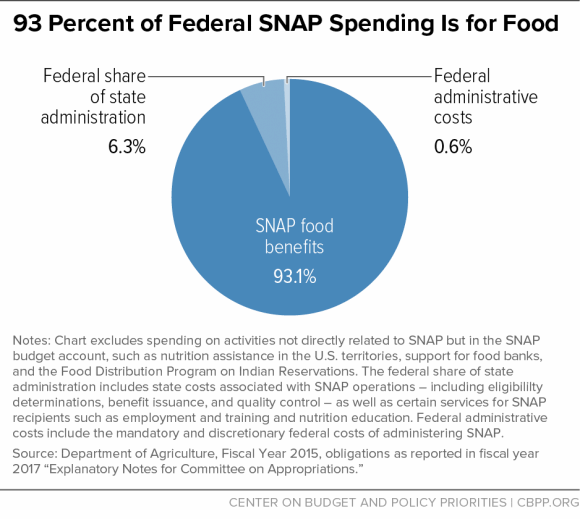BEYOND THE NUMBERS
Senate Agriculture Committee Chairman Pat Roberts reaffirmed his opposition yesterday to block-granting SNAP (formerly called food stamps), saying a block grant is “not the answer,” “SNAP seems to be working,” and the Committee will find ways to improve the program when it drafts the upcoming farm bill. Chairman Roberts is right to support SNAP’s decades-long federal guarantee to help low-income households across the country afford an adequate diet.
Despite SNAP’s modest benefits ¾ only about $1.40 on average per person per meal ¾ it’s a critical foundation for millions of low-income families, senior citizens, and people with disabilities who use its benefits to put food on the table each month.
There are a number of problems with converting SNAP to a block grant, or with other changes that would cap SNAP’s funding or merge it with other programs, as some House Republican leaders have proposed. We detail these problems in a new paper and a video featuring my colleague Jared Bernstein. For instance:
- SNAP would no longer respond to need. SNAP would no longer automatically expand to cover increased need for food assistance during an economic downturn or a natural disaster. People who experience a crisis like a job loss, divorce, or health emergency wouldn’t be assured of receiving help with groceries for themselves and their families. Had a block grant, at funding levels before the Great Recession, been in effect during that recession, federal SNAP funding would have been about half its actual level.
- States would likely cut eligibility or benefits deeply. A SNAP block grant accompanied by large funding cuts, as the last six House Republican budgets have proposed, would necessitate deep benefit and eligibility cuts. Since more than 90 percent of SNAP goes to benefits for buying food (see chart), states wouldn’t be able to avoid cutting food assistance.
- States would likely shift food assistance funds to other uses. Under a block grant, states could shift SNAP funds from food assistance to other purposes, and they’d likely do so when faced with budget shortfalls. That would mean even deeper food assistance cuts.
- Program integrity would be compromised. SNAP includes rigorous checks to ensure that federal dollars go to eligible households in the proper amounts, and it devotes substantial resources to combatting fraud. If SNAP were a block grant, much of this activity could shift to states, which wouldn’t likely have the capacity and resources to maintain so much oversight.
- Increased state flexibility wouldn’t help reduce poverty and hardship. States would use their new flexibility under a block grant mainly to decide how to cut food assistance ¾ whether by lowering benefits, eliminating eligibility for some types of households, or a combination of the two. Without cutting food assistance even deeper, states would have no resources under a block grant to improve the program by, for example, enhancing benefits or services, investing in employment and training, or improving participation among seniors or working families, two groups with historically low participation rates. As a result, poverty and hardship would rise.
SNAP works, strong evidence shows. It lifts millions of households out of poverty and helps tens of millions come closer to affording an adequate diet. And research finds that it improves child health, helps kids do better in school, and improves their long-term health and economic outcomes. Policymakers shouldn’t weaken its effectiveness with a block grant.

